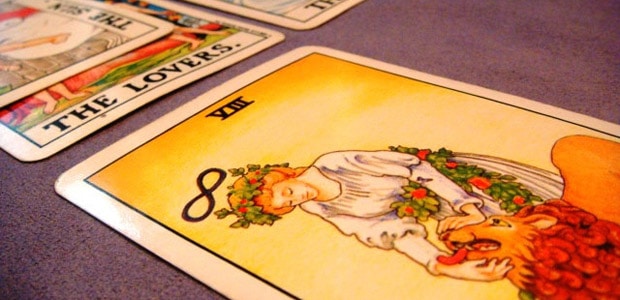
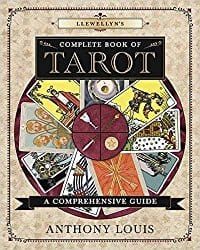
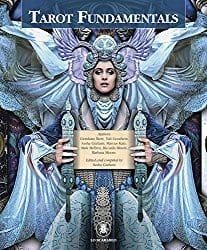 Llewellyn’s Complete Book of Tarot: A Comprehensive Guide, by Anthony Louis
Llewellyn’s Complete Book of Tarot: A Comprehensive Guide, by Anthony Louis
Llewellyn Worldwide, 9780738749082, 336 pp., 2016
Tarot Fundamentals, edited by Sasha Graham
Lo Scarabeo, 9780738748993, 624 pp., 2016
Tarot is an extremely vast subject of study and means of divination. It’s one that you can never truly master, as with every deck there are new mysteries to be found. This can make choosing a text to learn tarot from difficult as there is so much out there. Faced with multiple books, how will you make a choice?
This article is a review, but it’s not like the other ones you’ve seen on the site. It can also be read as a primer for choosing between learning materials. I read both Llewellyn’s Complete Book of Tarot by Anthony Louis and Tarot Fundamentals, edited by Sasha Graham, together to give aspiring tarot readers some guidance in choosing their learning materials.1
First impressions
I received both books at the same time and Fundamentals made a greater first impression. The book is hardcover with a very attractive illustration on the front. It is large and makes an impressive statement at first glance.
Complete, on the other hand, is much more understated. It is a paperback and thinner. The cover is less dynamic. However, it is also much lighter than Fundamentals, which means it is easier to transport.
Disregarding content for now, one thing that really stood out was that Fundamentals is a full colour text whereas Complete has only grayscale card illustrations. Fundamentals also shows a number of different decks for comparison while Complete appeared to only use a single deck, based on the traditional Rider-Waite-Smith (RWS) deck.
As far as straight out of the box impressions went, Fundamentals won hands down. Complete is a pretty standard beginner’s book, as far as the look of it. Fundamentals is more like a textbook in nature.
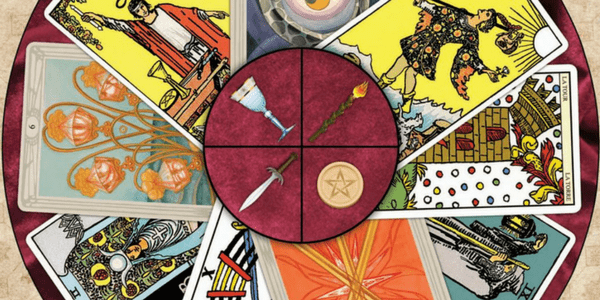
Book structure
Both texts share some basic similarities. They both explore the history of tarot to some extent. They both include card meanings and spreads, as well as how to use these tools. They both even have sections devoted to online tarot use.2 Despite this, how they handle the information is vastly different.
Complete opens with the history after a brief introduction of what tarot is and isn’t. It follows this up with information on spreads and how to read before diving into symbolism of the cards. Not the symbols found on the cards, but how things like numerology and astrology can be used in conjunction with the cards.
Throughout the opening parts of the text there are brief examples from readings Louis has performed for himself and clients to get a feel for how the cards work in actual practice. This provides a nice idea of what the cards are like hands on. The book’s first third or so is filled with this information before it gets to the actual cards and their various symbols.
In contrast, Fundamentals jumps right into the card definitions after a short “welcome to the book” introduction. Once past reviewing the cards individually, the book dives into how to read them. It spends a good deal of time on different methods, but doesn’t feature many spread options. Once the “how-to” information is covered, the book moves on to history and some assorted odds and ends of handling readings.
Overall, I think Fundamentals was better set up. The information on reading was right at the front, which is what most people are interested in first. This text is also easier to navigate than Complete, which feels pressed together and is hard to find things in without use of the table of contents.
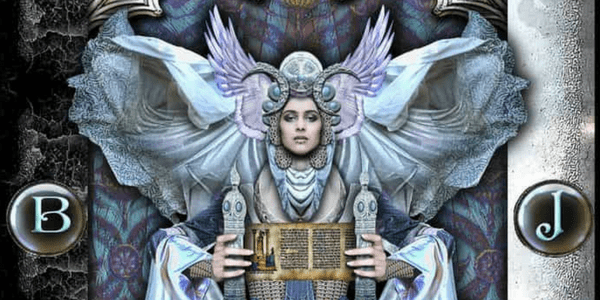
Content
First and foremost, the content of both books is solid. Both texts dive thoroughly into the history of tarot, the different card types, and how to read them. Both provide small practice suggestions for new readers throughout the text, making them equally useful for practical learning.
Despite how strongly they were aligned, there is a huge difference in how that information is conveyed, and the amount of information present. Fundamentals is geared more toward providing a full understanding of all things tarot, where Complete is more focused on giving the new reader tools to start.
To this end, Complete provides a handful of various spreads for you to practice. Fundamentals does not provide this information and only gives the reader the Celtic Cross spread. By contrast, Complete urges the reader to try different spreads for different occasions.
Another glaring difference in content was how each book presented the cards themselves. Both provide enough information for someone to begin reading; however, Complete handles every card the same way, offering a standard system of identification. Fundamentals includes different charting methods for the majors, minors, and court cards.
Neither of these systems is better or worse. Because Complete offers a standard system, it’s easy to find information as you switch back and forth, as everything is in the same spot. Even so, Fundamentals provides a very in-depth break down of every card for deeper understanding.
One thing that Complete does that Fundamentals fails to do is offer descriptions for the Thoth cards. The book uses RWS images; however, Louis takes time to offer multiple interpretations inside of his card descriptions, including clearly labeled Thoth meanings.
The place where Fundamentals really shines is that it is a very engaging text, with pages that are broken up by full colour photographs and images. Complete, despite the fact that it’s well written — and even funny at times — is not quite as easy on the eyes because it has quite a few pages of plain text.
Fundamentals offers a lot more information on how to read than Complete does. What I mean is that the text really dives deep into reading practices that do more than just interpret what the symbols on the cards mean. It more fully addresses how different decks present different meanings in their cards. Complete felt more concerned with very strict meanings, and the idea that the reader would be using a tarot deck that supported standard interpretations.
And the winner is. . .
Truthfully, there is no winner. Both of these books are very strong tarot guides and a pleasure to read. That being said, I feel that they are for two different levels.
Despite its name, I don’t feel like Tarot Fundamentals is a great book for anyone who is just starting to read tarot. It is a great read and contains a ton of useful information. I love the way that it is set up and prefer that system to the one in Complete Book of Tarot; however, Tarot Fundamentals is just too much for a new reader. I would recommend this book to someone who has the basics of tarot down and is really looking to expand their knowledge and practice.
Complete Book of Tarot, I feel, makes a better beginner’s book. The standardized system of information, the simple and straightforward card definitions — these elements will go a long way to giving a reader a solid foundation in the craft without overwhelming them. Plus, it’s so plain you won’t feel bad about marking it up!
Both the Complete Book of Tarot and Tarot Fundamentals are worth picking up. Both books are a great overview and introduction to the cards, but if you’re just starting, Complete Book of Tarot is a better choice to get you acquainted with reading tarot. By contrast Tarot Fundamentals will help you deepen your practice once you have some knowledge under your belt.
- Beginning tarot readers or those interested in learning the craft may also find Donyae Coles’s article “How to buy a tarot deck” helpful. [↩]
- See also, “Tarot reading online: Making a digital connection,” by Donyae Coles. [↩]








